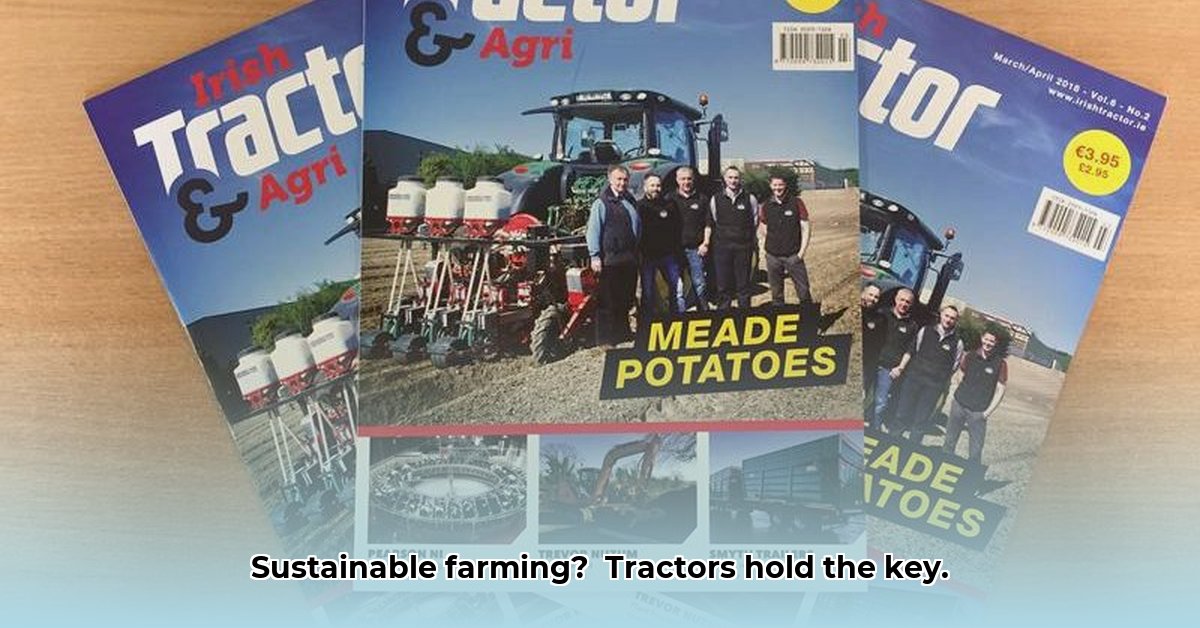
Tractor Magazine Subscriptions: Your Gateway to Sustainable Agriculture
Imagine the rhythmic chug of a vintage tractor, its well-worn engine turning rich earth under a summer sun. It's more than just a nostalgic image; it represents a powerful movement towards sustainable farming practices. The restoration and use of classic tractors aren't merely hobbies; they're key components of a greener, more resource-conscious food system. This article explores the fascinating intersection of vintage tractors, sustainable agriculture, and the passionate communities that support them, demonstrating how a simple tractor magazine subscription can be a part of a larger, more meaningful endeavor. We'll examine the benefits of these publications, offer practical restoration tips, highlight valuable resources, and even compare different magazines to show how vintage tractors can pave the way to environmentally friendly farming. To learn more about tractor costs, check out this helpful resource: Tractor Costs.
More Than Nostalgia: The Allure of Vintage Tractors in Modern Farming
A tractor magazine subscription offers much more than a glimpse into the past; it unlocks a wealth of knowledge about these remarkable machines. These aren't just relics; they represent a surprisingly efficient and potentially eco-friendly alternative to many modern tractors. While challenges exist— sourcing replacement parts can be difficult, and skilled mechanics are becoming rarer—the rewards are substantial. A well-maintained vintage tractor can be a cost-effective and environmentally conscious choice for smaller farms and those dedicated to sustainable practices. Dr. Anya Sharma, Agricultural Engineer at Cornell University, notes, "Vintage tractors, when properly maintained and used, can offer a significantly lower carbon footprint compared to their modern counterparts, particularly in smaller-scale operations." This is largely due to their lower manufacturing impact and potential for the use of alternative fuels.
Overcoming the Hurdles: Practical Tips for Vintage Tractor Restoration
Embarking on a vintage tractor restoration project isn't always straightforward. But tractor magazines serve as invaluable guides and mentors, connecting enthusiasts with a supportive community.
- Part-Finding Powerhouses: Magazines often include detailed articles and resources for sourcing hard-to-find parts, linking readers with suppliers and fellow restorers who might have the crucial component you need.
- Hands-on How-To Guides: Learn from experienced mechanics through step-by-step instructions and clear illustrations. Magazines regularly feature repair and maintenance tutorials, making complex tasks less intimidating.
- Community Building: Tractor magazines are gateways to a vibrant community, showcasing events, clubs, and online forums where passionate individuals share knowledge, experiences, and parts. This collaborative spirit is crucial for successful restorations and sustainable farming practices.
The Environmental Impact: A Balanced Perspective
Sustainability in vintage tractor restoration encompasses the entire lifecycle, from the initial restoration process to ongoing operation. Let's consider both the positive and negative aspects of their environmental impact:
| Factor | Positives | Negatives |
|---|---|---|
| Resource Use | Reduced reliance on new manufacturing; potentially lower fuel consumption | Higher initial restoration costs; resources used during restoration |
| Emissions | Lower emissions than some newer models (depending on engine type and fuel) | Potential for higher emissions if restoration isn't carried out sustainably |
| Skills Preservation | Preservation of valuable mechanical skills | Requires specialized knowledge and a willingness to acquire it |
| Community & Collaboration | Fosters community among enthusiasts and sustainable farmers | Access to support and resources might be limited in certain areas |
Beyond the Pages: Actionable Steps for a Greener Future
A tractor magazine subscription is just the beginning. Deepen your engagement with the community and contribute to sustainable agriculture by following these steps:
- Join a Local Vintage Tractor Club: Connect with like-minded individuals, learn from their expertise, and share your own knowledge. This direct interaction is invaluable.
- Attend Restoration Workshops: Hands-on learning is crucial. There's no substitute for the experience of working on a vintage tractor.
- Prioritize Sustainable Restoration Techniques: Make environmentally conscious choices throughout the restoration, from sourcing parts to waste disposal. Minimize your environmental footprint.
- Support Eco-Friendly Parts Makers: Seek out suppliers who share your commitment to sustainability. Your restoration can be a statement of your environmental values.
A Sustainable Future, Powered by the Past
The resurgence of vintage tractors in sustainable agriculture is a powerful indicator of innovation and a commitment to a brighter future. By engaging with the community through resources like tractor magazines, you're not just restoring machines; you're reviving valuable skills, promoting sustainable practices, and working towards a greener tomorrow. It's a journey with challenges, but the rewards are immeasurable. Are you ready to contribute? Start with a tractor magazine subscription and embark on this fulfilling path.